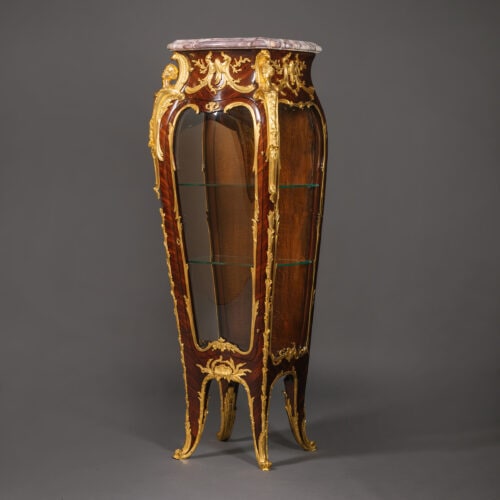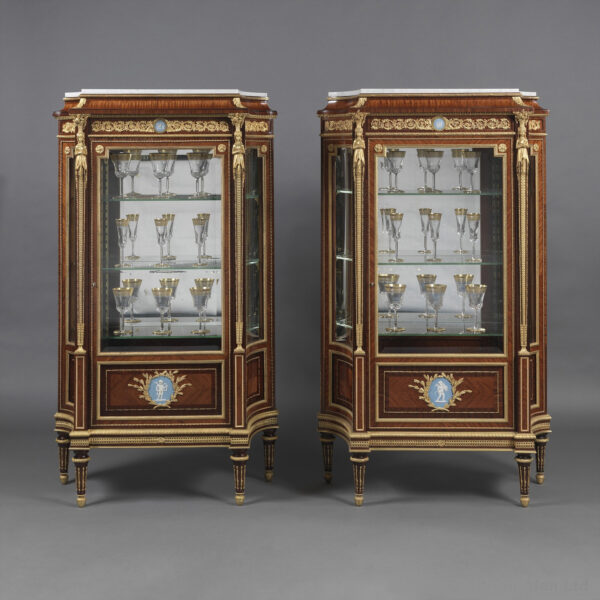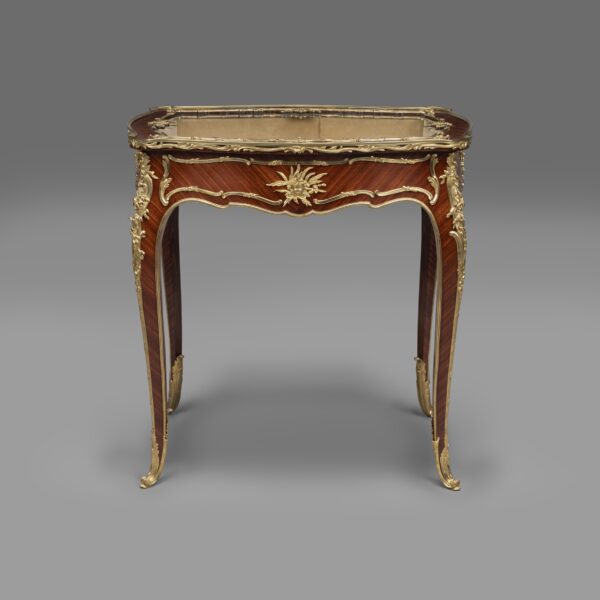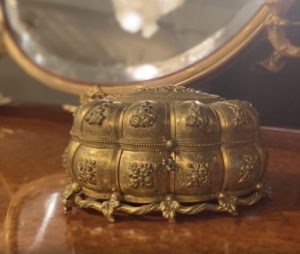François Linke
A Fine Louis XV Style Gilt-Bronze Mounted Vernis Martin Vitrine
£48,000
A Fine Louis XV Style Gilt-Bronze Mounted Bombé Vitrine With Vernis Martin Panels, by François Linke. Variation of Index No. 103 - Vitrine Louis XV...
Dimensions
Height: 169 cm (67 in)Width: 90 cm (36 in)
Depth: 43 cm (17 in)
Description
A Fine Louis XV Style Gilt-Bronze Mounted Bombé Vitrine With Vernis Martin Panels, by François Linke.
Variation of Index No. 103 – Vitrine Louis XV corniche cintrée 6 panneaux vernis Martin bois de violette.
This fine vitrine has a shaped brèche violette marble top above an arched cornice and a frieze decorated with panels of Vernis Martin, between projecting angles with fine scrolling foliate mounts and reeded banding. The central bombé glazed door has a fine Vernis Martin panel to the lower section depicting scenes of les fêtes galantes in the manner of Watteau and framed by fine gilt-bronze encadrement. The vitrine opens to a mirrored interior fitted with two glass shelves. The sides of the vitrine have similar bombé shaped glass and Vernis Martin panels and the whole is raised on cabriole legs with scrolled acanthus cast sabots.
A notable feature of this fine vitrine is the unusual crab like scallop shell or coquille and acanthus mount, which features at the base of the Vernis Martin panel to the door. The distinctive shell, as designed by Linke’s sculptor Léon Messagé, is held by delicate tendrils of acanthus implying the shape of a crab. This impressive and individual bronze mount is perhaps even more of a guarantee than a signature.
Date
Circa 1900
Origin
France
Medium
Gilt-Bronze and Vernis Martin
Signature
Signed 'F. Linke' to one bronze mount. The reverse of the bronze mounts stamped 'FL'.
François Linke (1855 – 1946) was the most important Parisian cabinet maker of the late nineteenth and early twentieth centuries, and possibly the most sought after cabinet maker of his period.
He was born in 1855 in the small village of Pankraz, in what is now the Czech Republic. Records show that Linke served an apprenticeship with the master cabinetmaker Neumann, then in 1875 at the age of 20 he arrived in Paris where he lived until he died in 1946.
It is known that the fledgling Linke workshops were active in Paris in the Faubourg St. Antoine as early as 1881, and during this time he supplied furniture for other more established makers such as Jansen and Krieger.
The quality of Linke’s craftsmanship was unsurpassed by any of his contemporaries and reached its peak with his spectacular stand at the Paris Exposition Universelle in 1900, where his Grand Bureau took the gold medal. He gambled his fortune and reputation on this stand, exhibiting several breathtaking items of furniture with sculptural mounts of the most exceptional quality and proportion. His gamble worked and his reputation was established to such an extent that Linke continued to be the pre-eminent furniture house in Paris until the Second World War.
As the Art Journal reported in 1900 on Linke’s stand:
‘The work of M. Linke … was an example of what can be done by seeking inspiration amongst the classic examples of Louis XV and XVI without in any great sense copying these great works. M. Linke’s work was original in the true sense of the word, and as such commended itself to the intelligent seeker after the really artistic things of the Exhibition. Wonderful talent was employed in producing the magnificent pieces of furniture displayed….’
The formation of Linke’s distinctive style was made possible by his collaboration with the sculptor Léon Messagé. Together Linke and Messagé designed furniture for Linke’s 1900 exhibition stand, with exuberant allegorical figures cast in high relief, that exemplified Linke’s ability to seamlessly merge the different mediums of wood carving, bronze and marquetry into a dynamic unified whole.
Today Linke is best known for the exceptionally high quality of his work, as well as his individualism and inventiveness. All of his work has the finest, most lavish mounts, very often applied to comparatively simple carcasses. The technical brilliance of his work and the artistic change that it represented were never to be repeated.
Bibliography:
Payne, Christopher. François Linke, (1855 – 1946), The Belle Époque of French Furniture, Antique Collectors’ Club, (Woodbridge, UK), 2003.
Meyer, Jonathan. Great Exhibitions – London, New York, Paris, Philadelphia, 1851-1900, Antique Collectors’ Club, (Woodbridge, UK), 2006; pp. 298 – 300.
Ledoux – Lebard, Denise. Les Ébénistes du XIXe siècle, Les Editions de l’Amateur, (Paris), 1984; pp. 439-43.
Revue Artistique & Industrielle, (Paris), July-August 1900.
Coral Thomsen, D. (ed), The Paris Exhibition 1900, The Art Journal, 1901; p.341.
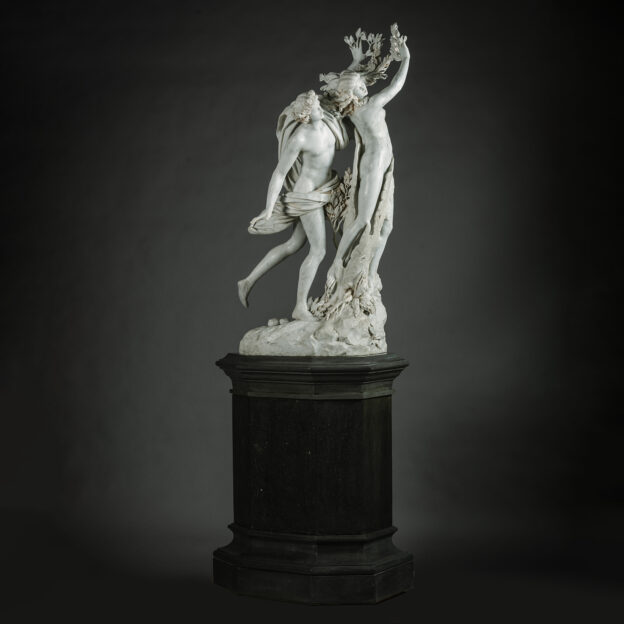




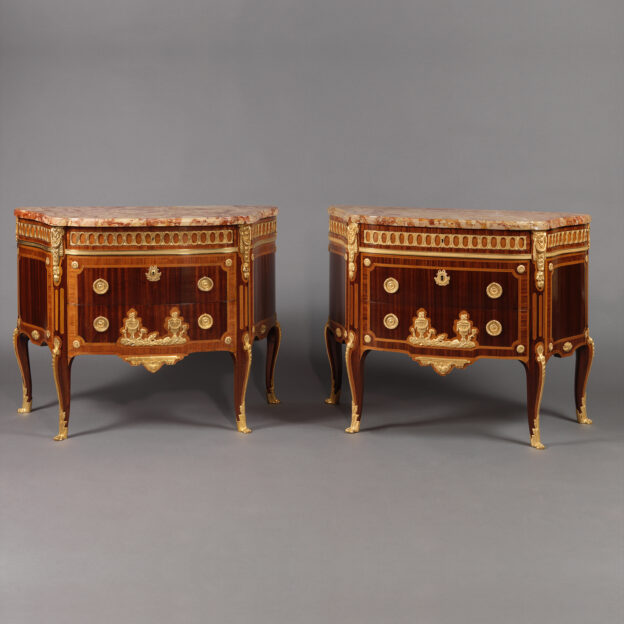
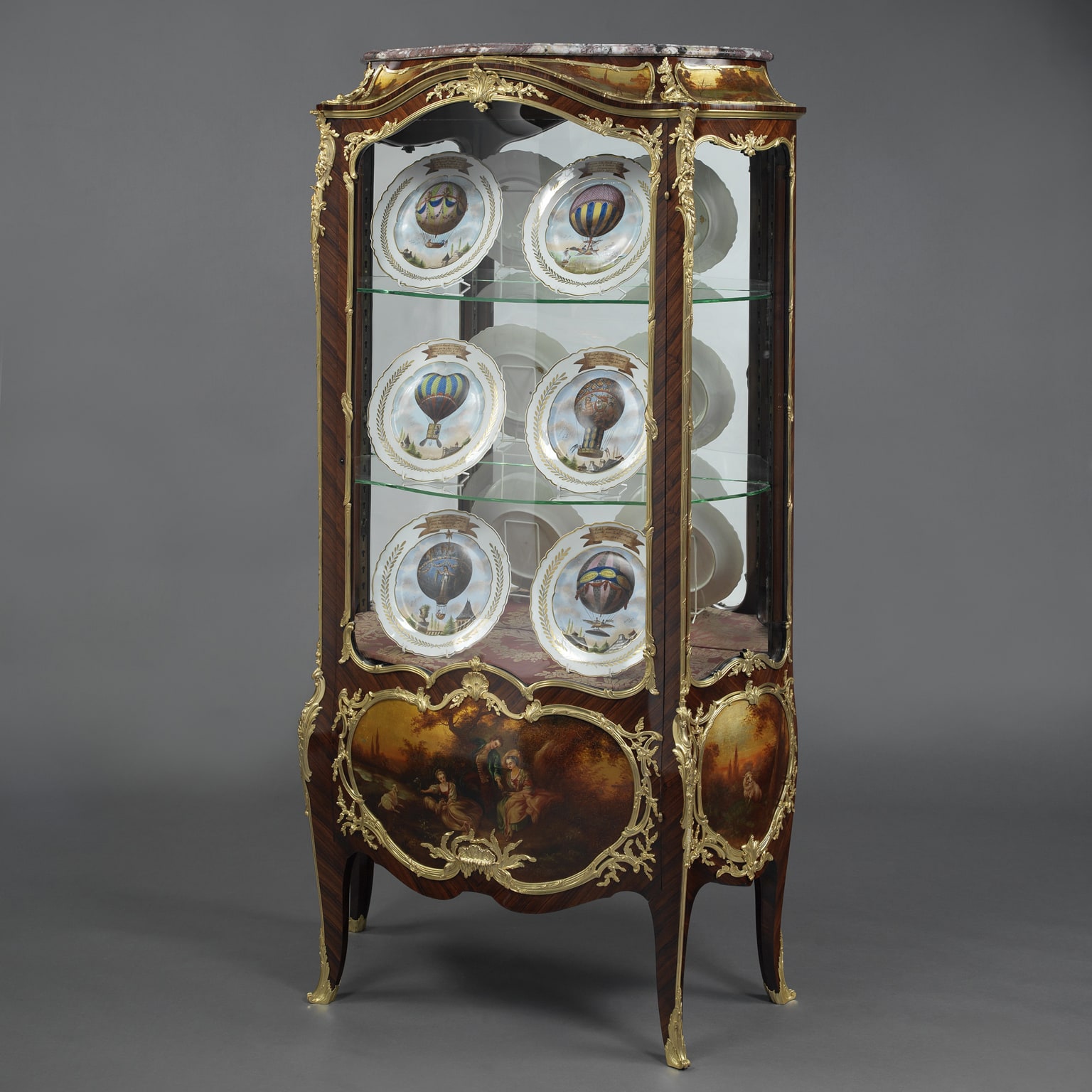
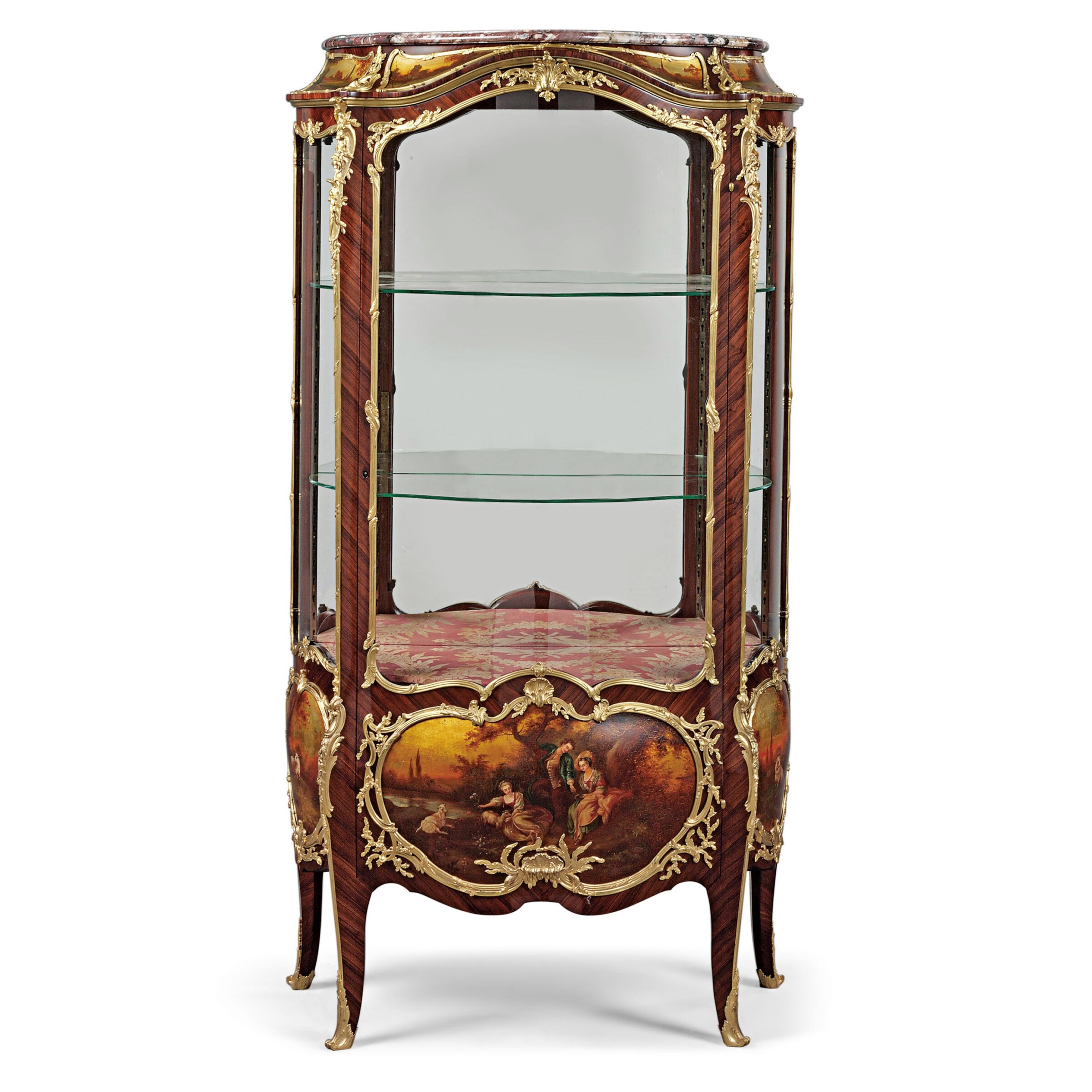
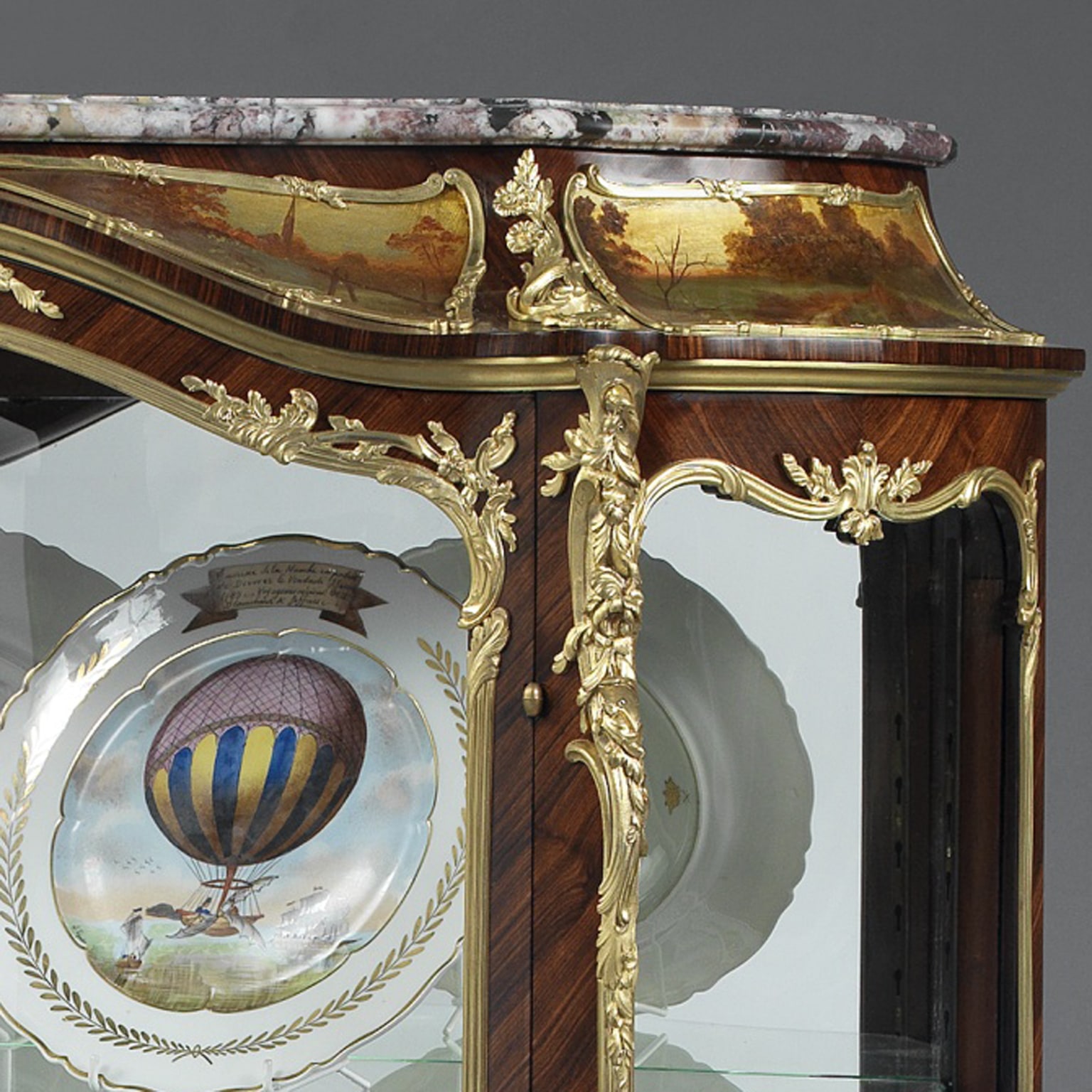
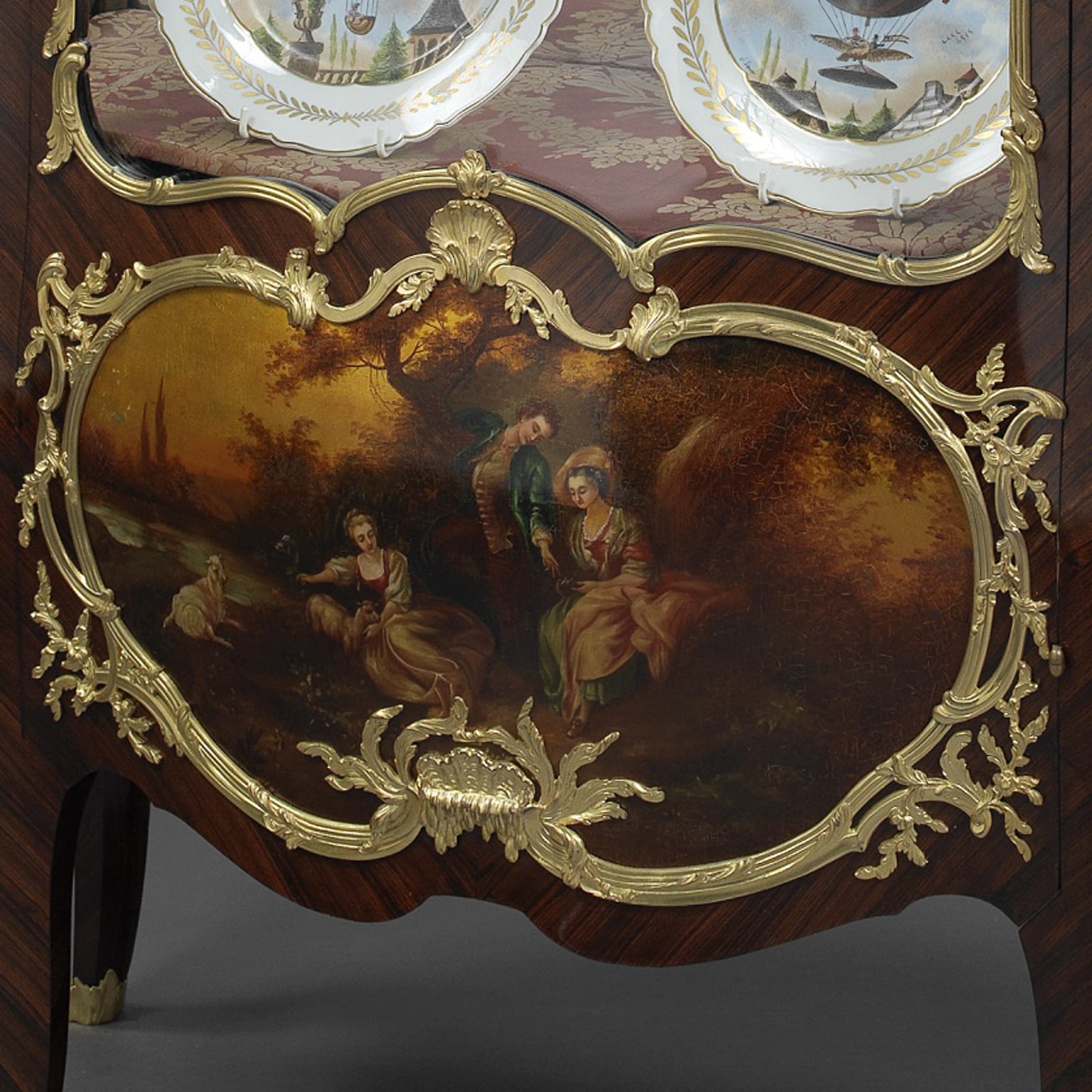

 Print
Print